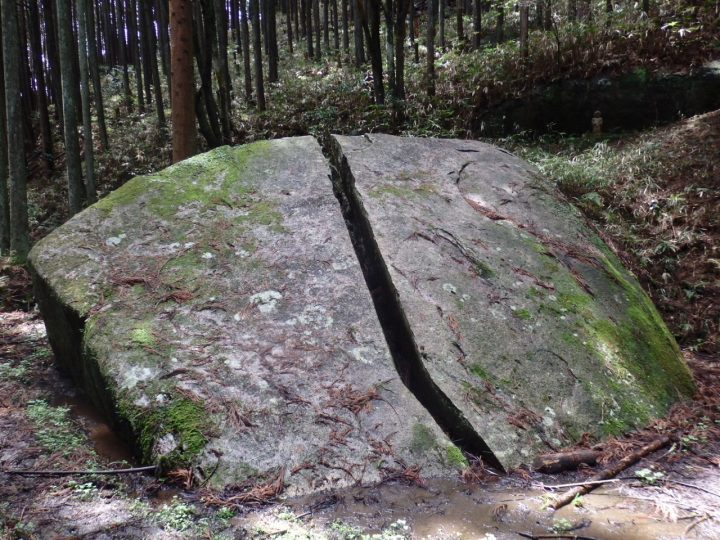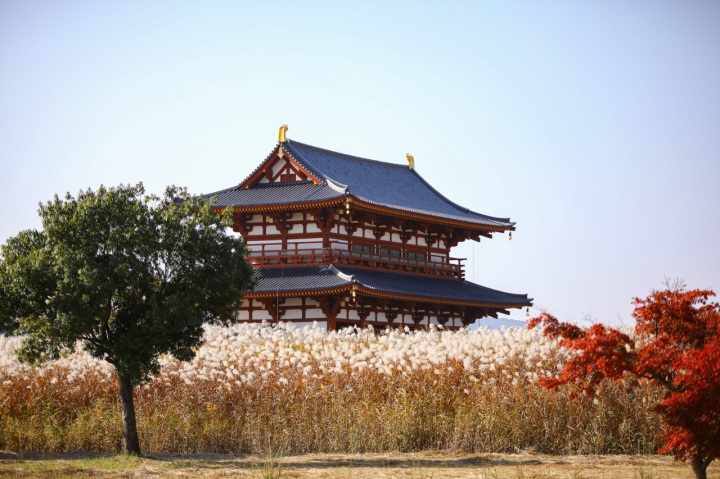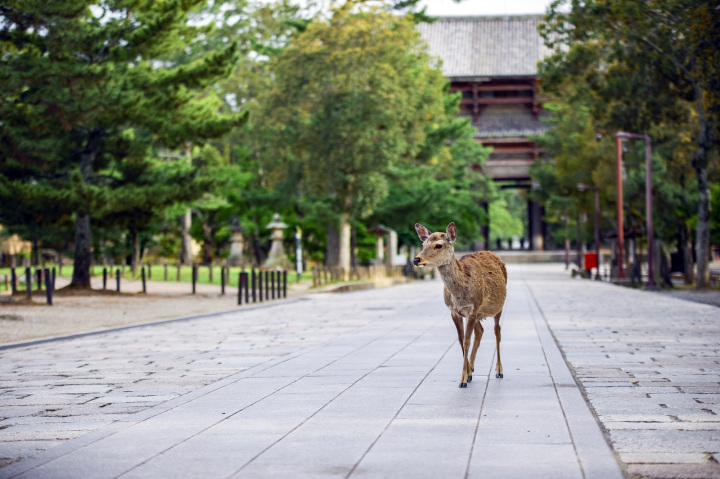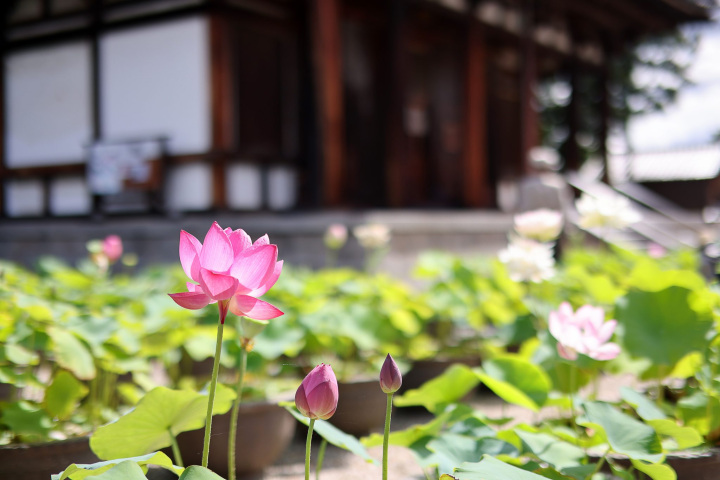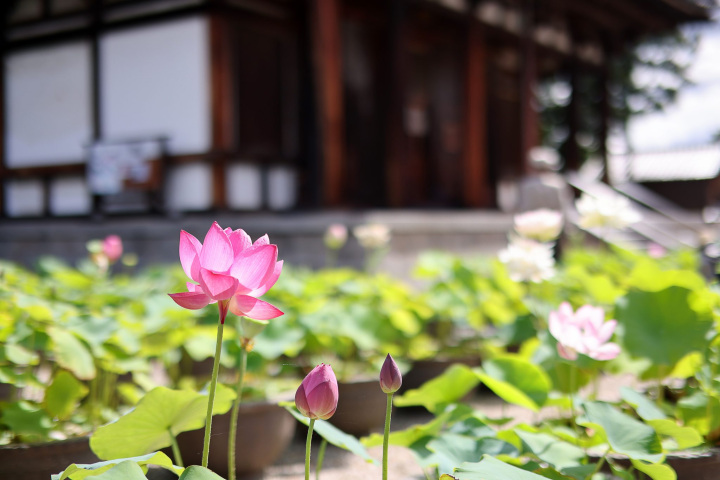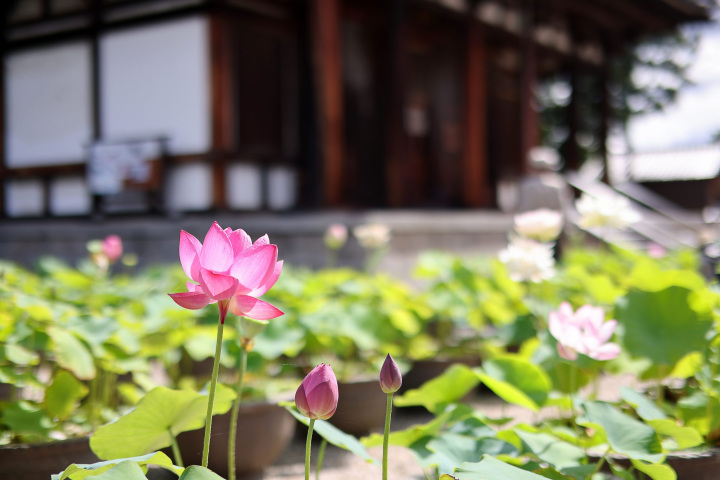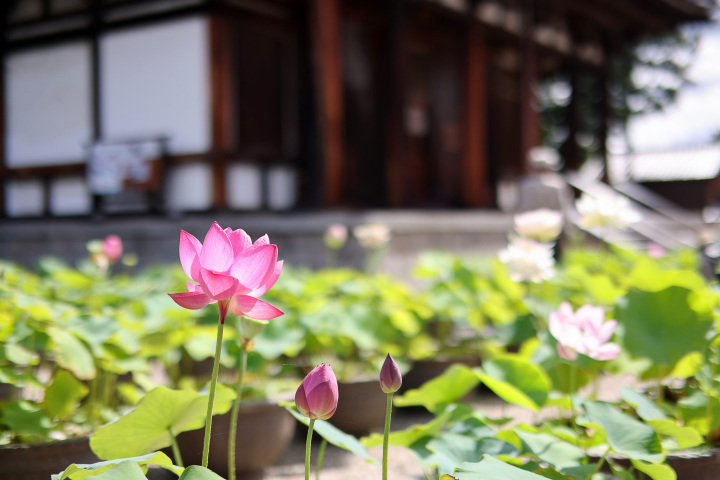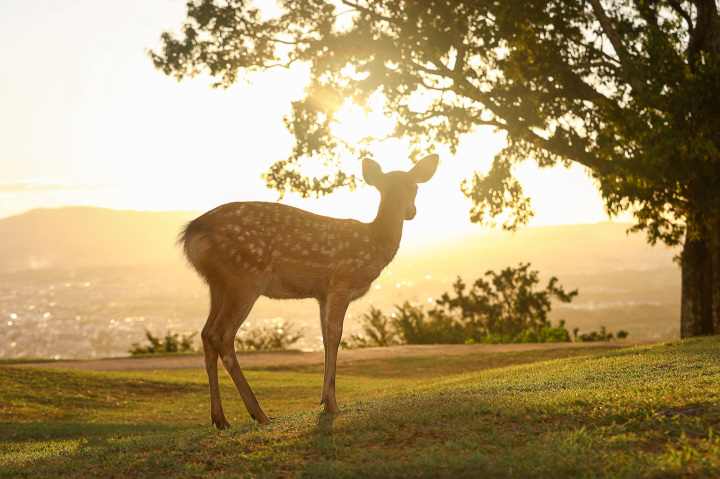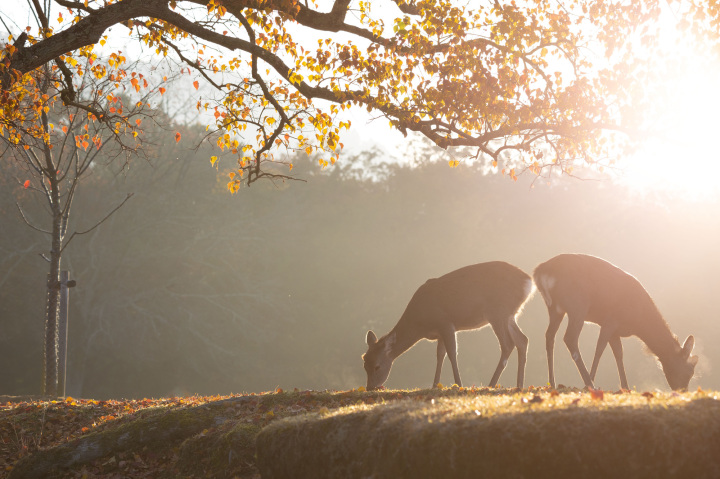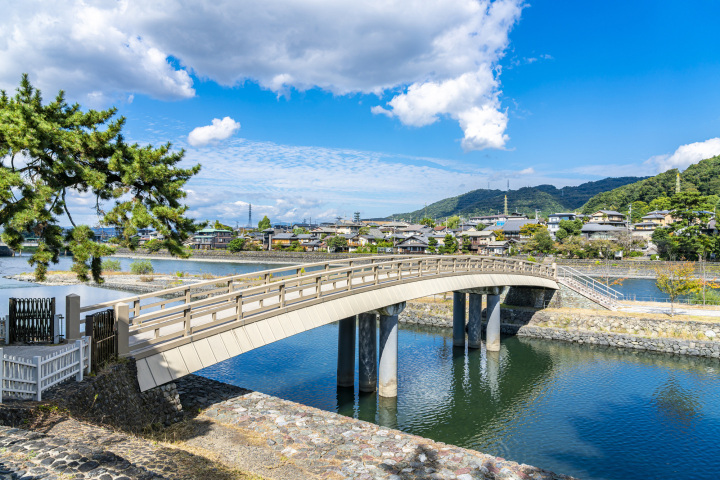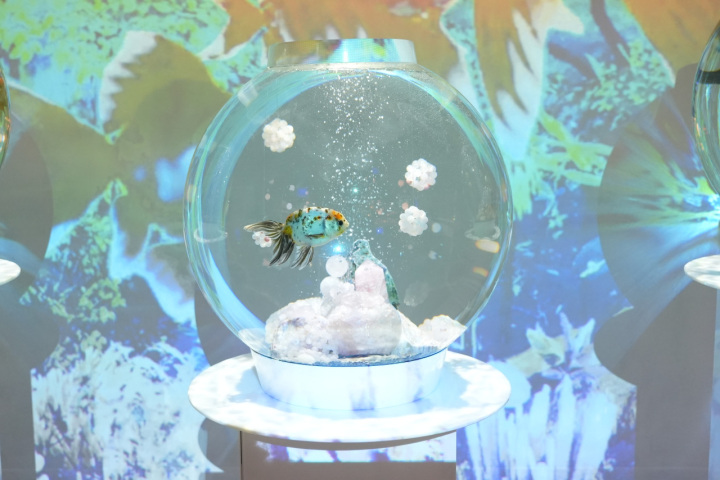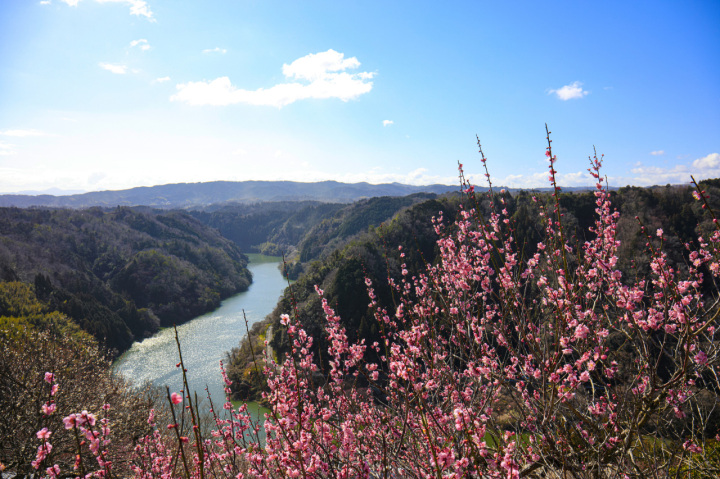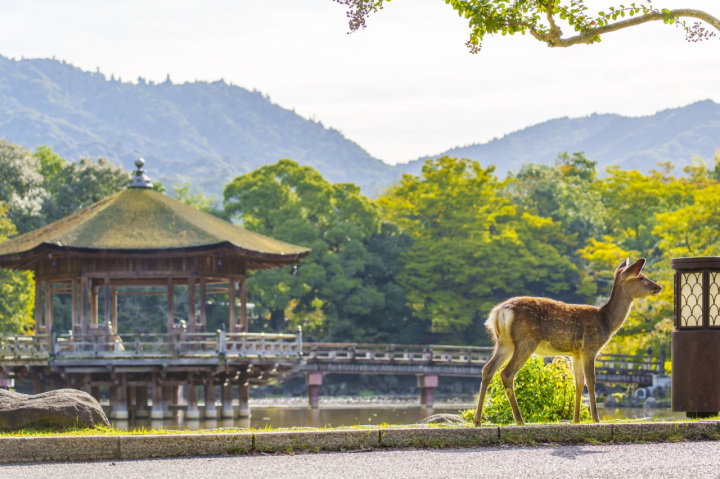Perfect for spring drive & World Heritage fans! Itineraries to Enjoy World Heritage Sites in Nara Prefecture, Visiting Mt. Yoshino and Cultural Properties of Ancient Nara
This course takes visitors to Mt. Yoshino, registered as a World Heritage site as “Sacred Sites and Pilgrimage Routes in the Kii Mountain Range,” and eight properties in Nara City, registered as a World Heritage site as “Cultural Properties of Ancient Nara.” Here are itineraries perfect for a spring drive and World Heritage fans!
- Days required
- 1 night and 2 days
- Main methods of transportation
- Car
Itinerary features
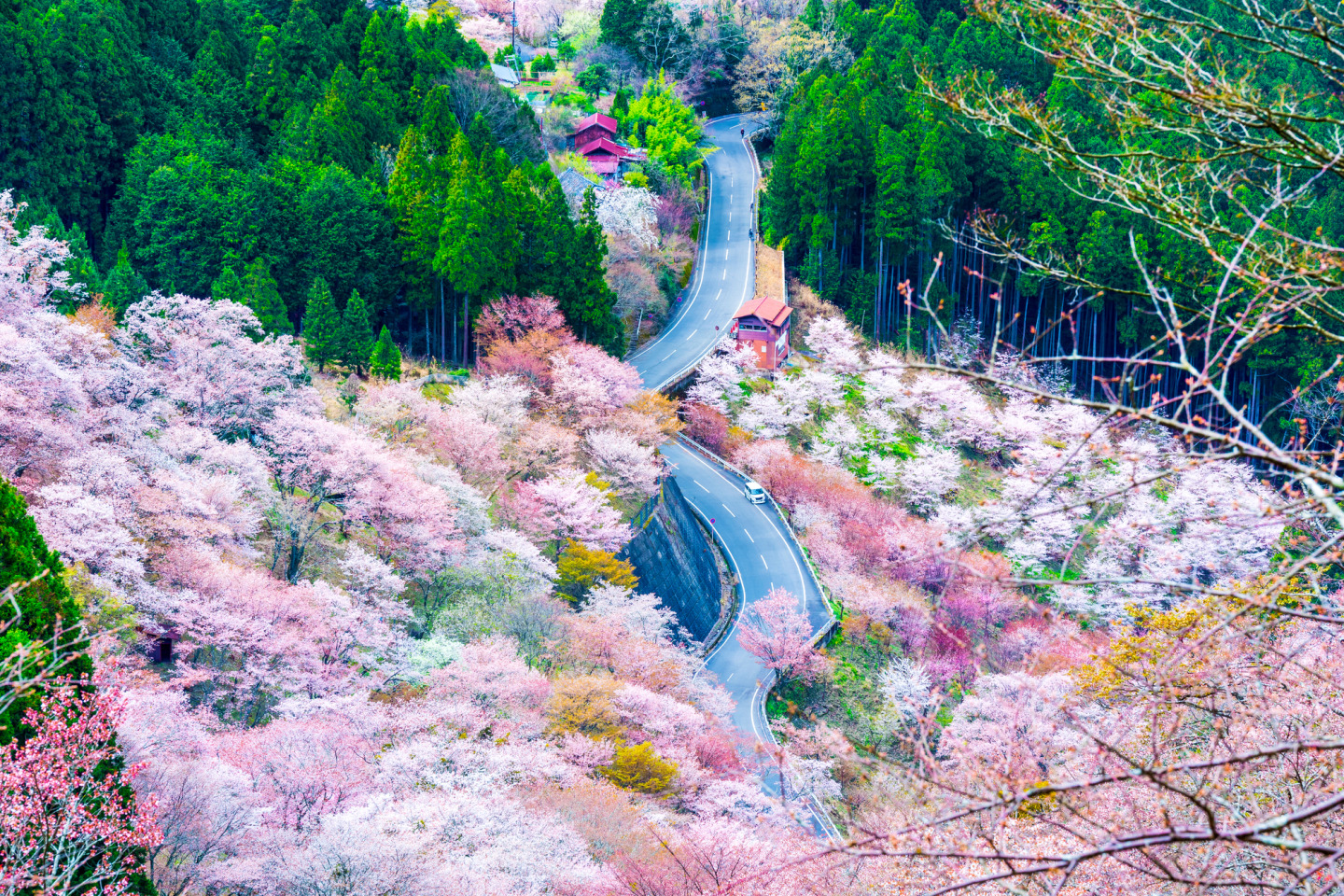
Kinpusenji Temple (World Heritage)
![[ Undefined: coursed-title-plain ]](/lsc/upfile/courseDetail/0000/0074/74_1_l.jpg)
Mt. Yoshino is famous for its cherry blossoms. Kinpusenji Temple is the symbol of Mt. Yoshino. The powerful Zaodo (Main Hall), a national treasure, is Japan's second largest wooden structure after the Great Buddha Hall of Todaiji Temple. Three huge statues of Zao Gongen (the principal object of worship for the Shugendo religion) stand 7 meters tall and are characterized by their divine blue color. Each is said to be a guardian in the past, present, and future, open to the public for a limited period each year. The excitement of coming face to face in the mystic atmosphere of the temple with these statues, which people have worshipped, will be your special experience.
Image: Zaodo(Main Hall), Kinpusenji Temple
Stroll in Takabatake area
![[ Undefined: coursed-title-plain ]](/lsc/upfile/courseDetail/0000/0078/78_1_l.jpg)
The Takabatake area is Nara City's inner sanctum. It was once a shrine town where the priests of Kasugtaisha Shrine lived. The district is steeped in history and culture and beloved by famous writers such as Shiga Naoya.
There are plenty of things to see here, including the former home of the literary giant Shiga Naoya, who lived with his family for nine years, and the Shin-Yakushiji Temple, famous for its impressive statues of the Twelve Heavenly Generals. Another thing you can't miss is the elegant cafes. There are many unique, stylish cafes around, renovated from old houses and hidden gems where you can enjoy the finest coffee. After strolling through the historic streets, why not spend some relaxing time savoring some delicious coffee and sweets?
[Image: Shiga Naoya Former House
Sasayaki-no-komichi(whispering promenade)
![[ Undefined: coursed-title-plain ]](/lsc/upfile/courseDetail/0000/0082/82_1_l.jpg)
Sasayaki-no-komichi(whispering promenade) is a lush walking path connecting the Takabatake area and Kasugataisha Shrine. It is said that priests used to walk this path on their way to work, creating a fantastic atmosphere of tranquility. Forests spread out on both sides of the path, and small, pretty flowers can be seen from winter to spring. Enjoy walking in the forest while listening to the chirping of wild birds and the sound of leaves rustling against each other.
Image: Sasayaki-no-komichi(whispering promenade)
Kasugataisha Shrine
The shrine of the Fujiwara clan associated with the legend of the divine deer.
![[ Undefined: coursed-title-plain ]](/lsc/upfile/spot/0001/0058/10058_1_l.jpg)
The Kasugataisha Shrine is situated in a primeval forest. The brilliant vermilion structures beautifully contrast with the surrounding greenery. Passing through the first and second Torii gates, you can see numerous stone lanterns standing on both sides of the path leading to the shrine. Continuing further, you will reach the main hall. From the gate, a corridor extends to both the left and right. A significant number of lanterns hang from the eaves of the corridor, which are illuminated twice a year (2/3 and 8/14-15).
When the capital was transferred to Nara in 710, the Fujiwara clan held a mass for the family's tutelary deities, which is considered the origin of this shrine.
The shrine was established here in 768. Like the Kohfukuji Temple, it flourished alongside the Fujiwara family even after the capital moved to Kyoto. After the Middle Ages, this belief became widespread among common people, as evidenced by the fact that both dignitaries and ordinary citizens donated various hanging and stone lanterns.
The tutelary deities enshrined here are Takemikazuchi-no-Mikoto from Kashima (Ibaraki Prefecture), Futsunushi-no-Mikoto from Katori (Chiba Prefecture), and Amenokoyane-no-Mikoto and Himegami from Hiraoka (Osaka Prefecture).
- Address
- Nara City160 Kasugano-cho
- Times
- Opening Hours:
March to October: 6:30 AM to 5:30 PM
November to February: 7:00 AM to 5:00 PM
■National Treasure Hall
9:00 AM to 5:00 PM (Last admission at 4:30 PM)
■Kasuga Taisha Shrine Manyo Botanical Garden
9:00 AM to 4:30 PM (Last entry at 4:00 PM) - Closed
- ■Treasure Hall: Closed except during three annual special exhibitions.
■Kasuga Taisha Shrine Manyo Botanical Garden
・April-May: Always open
・June-March: Closed on Tuesdays
(Should national holidays fall on a Tuesday, the garden will be closed the following day)
Nara Park
The majestic park, fitting for the ancient capital, harmonizes with beautiful lawns and rich natural surroundings, where 1,300 wild deer draw many visitors.
![[ Undefined: coursed-title-plain ]](/lsc/upfile/spot/0001/0089/10089_3_l.jpg)
This vast park, spanning approximately 660 hectares, covers the eastern part of Nara City. It is a majestic park that befits the ancient capital, incorporating Todaiji Temple, Kohfukuji Temple, Kasugataisha Shrine, the Nara National Museum, and the Kasugayama Primeval Forest.
In this park, which harmonizes with beautiful lawns and rich natural surroundings, including 1,000-year-old pine trees, approximately 1,300 wild deer roam in herds. These deer are considered the legendary divine deer of Kasugataisha Shrine, making it a tourist spot that symbolizes the ancient capital of Nara and attracts many visitors.
- Address
- Nara CityKasuga-cho
- Closed
- Open year-round
[Lunch] Around Nara Park
![[ Undefined: coursed-title-plain ]](/lsc/upfile/courseDetail/0000/0087/87_1_l.jpg)
Teahouses with an old-fashioned atmosphere are scattered around Nara Park. They are recommended for lunch, as you can take a break or have a meal at a table. There are also cafes and restaurants on the road from Nara Park to Todaiji Temple that are perfect for lunch, so use Google Maps to find one that interests you.
[Image: Mizuya Chaya]
Todai-ji Temple
Nara's most famous temple, featuring its principal image, the Vairocana Buddha, is known worldwide as the Great Buddha of Nara.
![[ Undefined: coursed-title-plain ]](/lsc/upfile/spot/0001/0001/10001_1_l.jpg)
Todaiji Temple and its principal image of the Great Buddha, widely known as Daibutu, represent Nara in all its aspects. Daibutsu is housed in an imposing wooden structure that is the largest in the world.
As the imperial ordinance for the construction in 743, the Great Buddha was cast under full state sponsorship and people's cooperation. The consecrating ceremony was held in 752. It took almost 40 years to complete the whole temple complex, including pagodas, halls, and gradually extended areas. Even after the capital moved to Kyoto, the temple enjoyed its prosperity under the protection of successive emperors. However, the two big wars attacked the temple in 1180 and 1567, severely damaging or burning most of it.
However, with tremendous efforts, the temple was restored each time. Many of the current buildings were reconstructed after that. However, a large number of noted Buddhist statues and buildings from the Nara era remain. Todaiji Temple is a Unesco World Heritage site.
A typical sightseeing course is as follows:
the Nandai-mon Gate
the Daibutsu-den Hall
the Belfry
the Shunjo-do Hall
the Sammai-do Hall (Shigatsu-do)
the Hokke-do Hall (Sangatsu-do)
the Kaisan-do Hall
the Nigatsu-do Hall
the Tegai-mon Gate
the Kaidan-in
Even if you quickly complete the whole course, it takes 4 hours. If you don't have much time, it's better to focus on the Daibutsu-den Hall first, then the Nigatsu-do Hall (the Hall for the Shunie ceremony in March), where you can see an incredible sunset in the west.
(15 minutes' walk from Kintetsu Nara Station)
- Address
- Nara City406-1 Zoshichou
- Times
- ■Great Buddha Hall (Daibutsuden)
April to October: 7:30 AM - 5:30 PM
November to March: 8:00 AM - 5:00 PM
■Hokkedo Hall (Sangatsudo) & Kaidando Hall
Open year-round: 8:30 AM - 4:00 PM
■Todaiji Temple Musem
April to October: 9:30 AM - 5:30 PM (last entry at 5:00 PM)
November to March: 9:30 AM - 5:00 PM (last entry at 4:30 PM) - Closed
- Open all year
Nigatsu-dō
![[ Undefined: coursed-title-plain ]](/lsc/upfile/courseDetail/0000/0092/92_1_l.jpg)
Nigatsu-dō locates on a hill at the eastern end of the Todaiji Temple grounds, and from its stage, you can see the whole city of Nara. When the weather permits, visitors can enjoy a spectacular view of the cityscape at sunset. After the sun goes down, the lanterns are lit, and the atmosphere becomes even more magical, making this a perfect spot to end your visit to the ancient capital of Nara.
[Image: Nigatsu-dō of Todaiji Temple]
